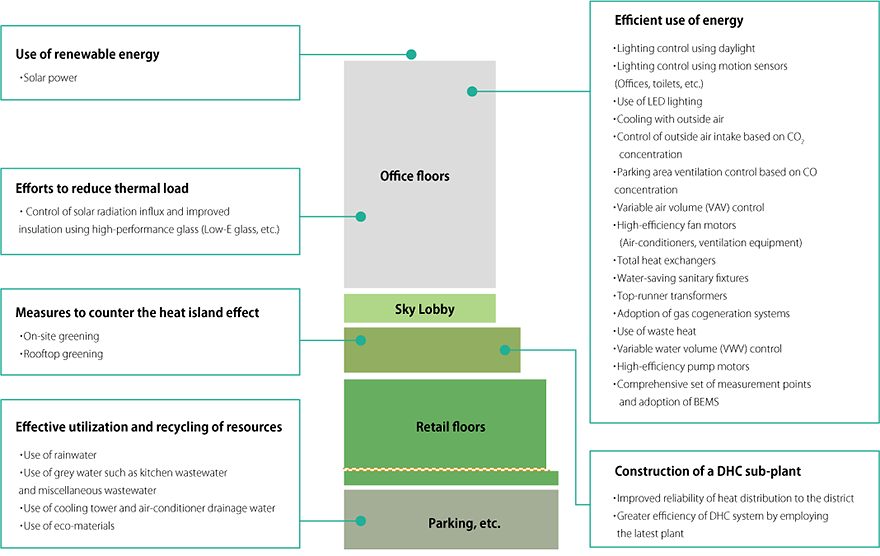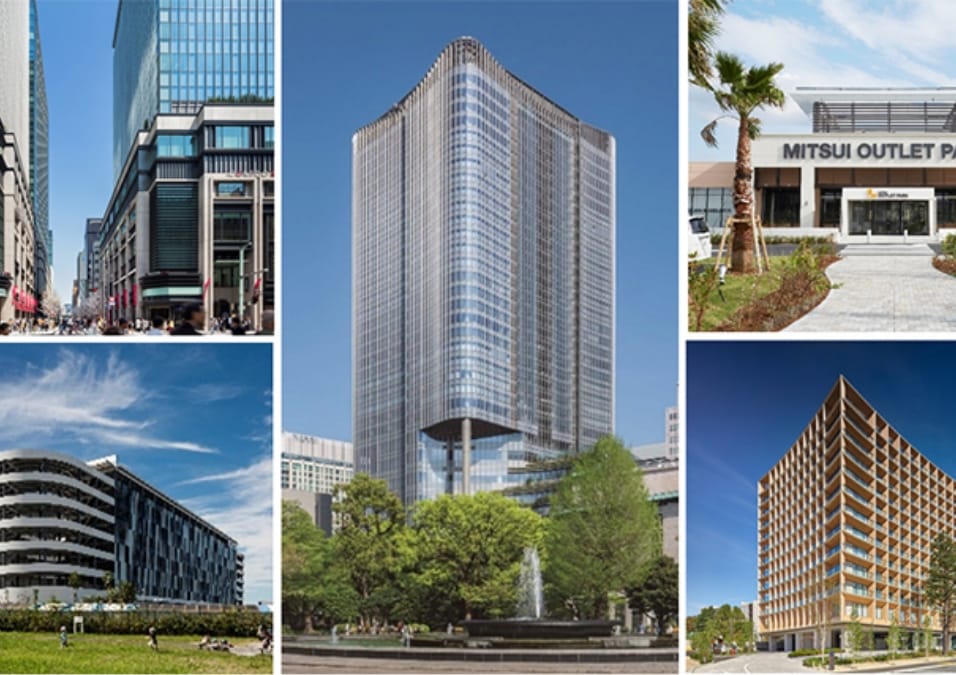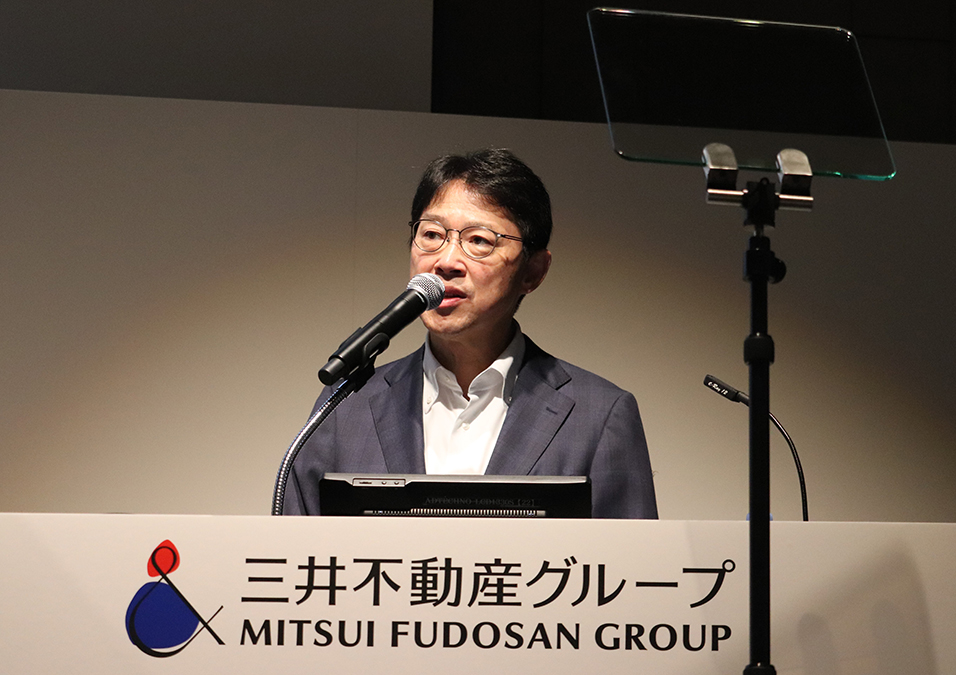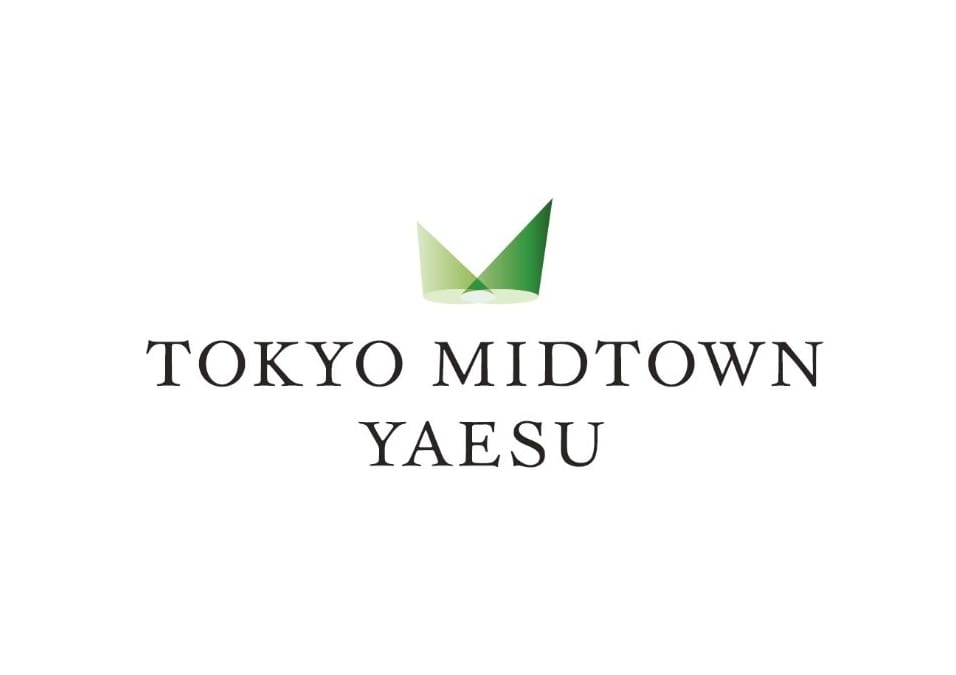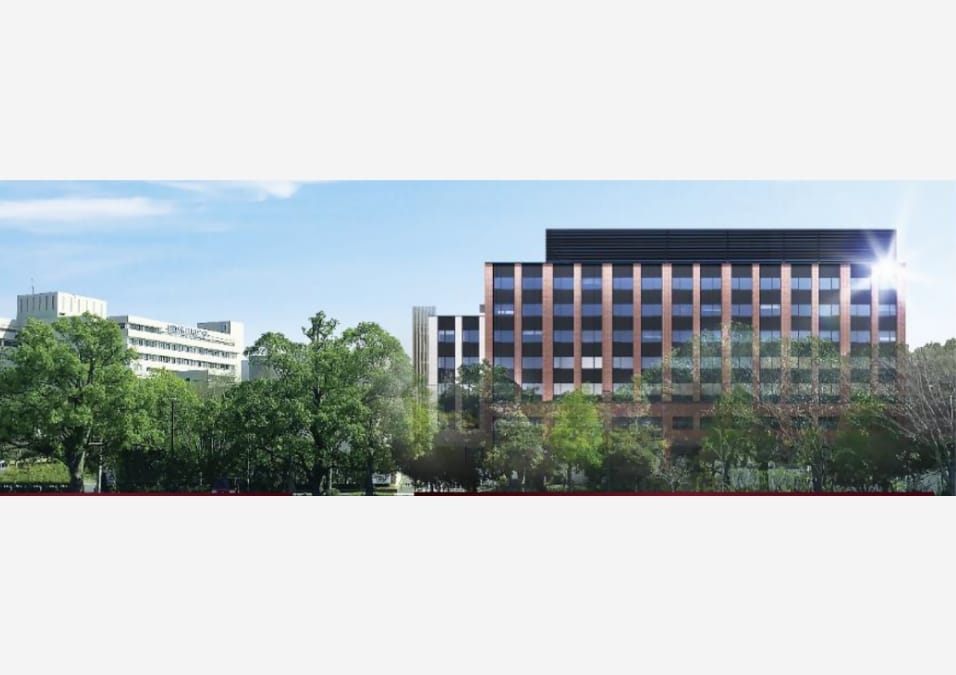Awareness of Climate Change
Since the Industrial Revolution, an increase in energy consumption has heightened the concentrations of greenhouse gases, such as carbon dioxide (CO2), in the atmosphere, and global warming is progressing. If warming continues without taking any effective countermeasures, there will be major changes in the earth's climate. This will cause phenomena such as rising sea levels and abnormal weather patterns, and have a great impact on the living environments of people and other organisms. Abnormal weather patterns will also increase the risk of damage to the business activities of the Group.
To curb global warming, reduce the risk to the Group due to climate change, protect environments where people and other organisms can live, and build a sustainable, carbon-free society, the Group believes that one of its key social missions as a real estate developer is to create, supply, and operate buildings and neighborhoods which curb energy consumption, and have low emissions of greenhouse gases.
Policy
Based on our Group Environmental Policy, we create buildings and neighborhoods with low energy consumption and reduced emissions of greenhouse gases, and we aim to build a carbon-free society by taking steps together with our business partners, tenant companies and stores, and customers, to address global warming, such as conservation of energy.
In November 2021, we formulated Group action plans. We have been working hard to achieve our greenhouse gas emission reduction goals-a 40% reduction in emissions by FY2030 (compared to FY2019 levels) and net zero by FY2050-and we have been further promoting actions as part of a unified supply chain.
- Action Plan 1
- Improve environmental performance of new and existing properties
- Action Plan 2
- Greening of electricity in common areas of properties and areas used by the company
- Action Plan 3
- Provide Green Menu to tenants and buyers
- Action Plan 4
- Secure stable renewable energy sources
- Action Plan 5
- Initiatives to reduce CO2 emissions during construction
*Other Key Initiatives
Utilization of forests, Open innovation, Acquisition of external certifications, Urban development initiatives, Improvement of internal systems, Introduction of internal carbon pricing (ICP: A mechanism to promote decarbonization by placing a value of 5,000 yen/t-CO2 on in-house CO2 emissions), etc.
For more detailed information about Group Action Plan to Realize Decarbonized Society, please refer to the following :
⇒ https://www.mitsuifudosan.co.jp/english/esg_csr/carbon_neutral/
Major Initiatives
Energy Conservation, Creation, and Storage
In addition to energy conservation, the Group is actively engaged in energy creation using solar power and cogeneration systems, and energy storage using large-scale storage batteries. In this way, we create buildings and neighborhoods with low energy consumption and reduced emissions of greenhouse gases. We are also involved in energy-saving activities together with our business partners, tenant companies and stores, and customers.
Energy Conservation, Creation, and Storage in Office Buildings
Efforts at TOKYO MIDTOWN HIBIYA
At TOKYO MIDTOWN HIBIYA (Chiyoda-ku, Tokyo), we employ an exterior covering and high-performance glass to reduce thermal load, use high-efficiency systems and energy-saving equipment such as lighting control systems that utilize daylight, and make use of waste heat from a gas cogeneration system. We also create energy through the installation of a solar power system (generation capacity approx. 20 kW). By using these energy conservation and creation systems, we have attained Level 3 for Perimeter Annual Load (PAL) and Energy Reduction Ratio (ERR) evaluation in the Tokyo Metropolitan Building Environmental Planning System, and the S Rank under the CASBEE (Comprehensive Assessment System for Built Environment Efficiency) scheme.
We have also installed a new sub-plant for district heating and cooling (DHC), and by linking it with an existing DHC plant in the Hibiya area, we have helped realize a high-efficiency energy supply for the entire district.
Overview of Environmental Efforts at TOKYO MIDTOWN HIBIYA
Efforts at the Nihonbashi Takashimaya Mitsui Building
The Nihonbashi Takashimaya Mitsui Building (Chuo-ku, Tokyo) has attained Level 3 for PAL/ERR evaluation in the Tokyo Metropolitan Building Environmental Planning System.
Energy Conservation at Large-Scale Logistics Facilities
At its large-scale logistics facilities, Mitsui Fudosan Logistics Parks (MFLP), the Company is installing LED lighting and solar power systems. MFLP is an urban development-type logistics facility that aims to coexist with the local community and create a lively surrounding area, and has reduced its environmental impact by introducing solar power generation facilities on the site and actively utilizing a "green power supply service".
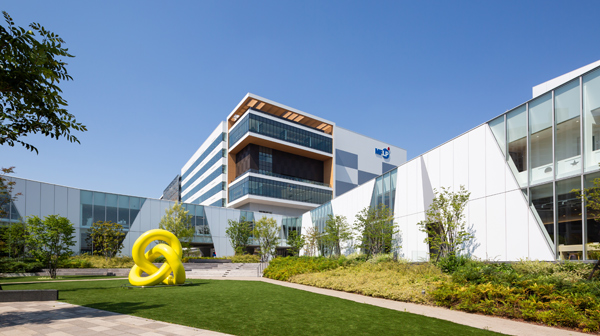
MFLP Funabashi Ⅲ
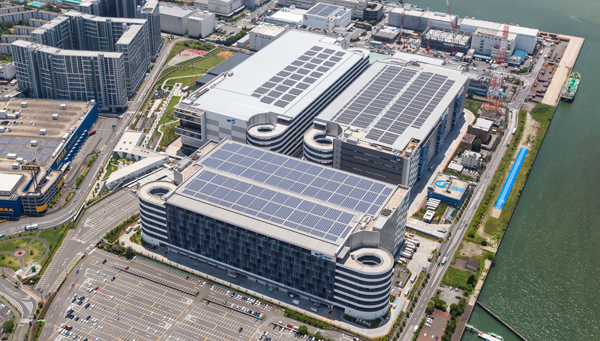
MFLP Funabashi Ⅲ
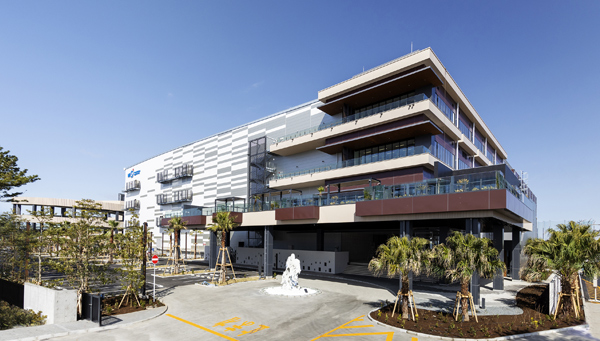
MFLP Ichikawa Shiohama Ⅱ
Housing-related Initiatives
In April 2022, Mitsui Home released a new product, IZM, based on the concept of modern design for a decarbonized society. This product meets the ZEH (Net Zero Energy House) standard even in large spaces with large openings and large atrium, and can also be linked to energy generators such as solar power generation systems, energy storage systems, V2H, etc., thereby contributing not only to reduced running costs in daily life but also to improved resilience by securing emergency power sources during emergencies. The design features a linear, modern exterior composed of a newly developed "wing roof" and a symbolic exterior "privacy wall," as well as a "lanai," a semi-outdoor space that provides a borderless connection between the inside and outside of the building. The building offers a variety of spaces that allow customers, especially those with children, to enjoy a free and affluent lifestyle that is unique to them.
The "privacy wall", which shields the building from outside view, is made of wood and integrated with the building. By maximizing the use of wood, a sustainable building resource that is friendly to people and the global environment, reduced construction period and high environmental performance is achieved.
Energy Management System
The Group is installing optimal energy management systems at each type of property: office buildings, retail properties, condominiums, and detached housing. We are also introducing area energy management systems to link the energy management systems of individual buildings, and manage energy over an entire block.
Examples of Energy Management System Adoption
- Note:
- BEMS: Building Energy Management System
- MEMS: Mansion Energy Management System
- HEMS: Home Energy Management System
- AEMS: Area Energy Management System
- TEMS: Town Energy Management System
Smart Meters
We have been installing pulse output meters (smart meters) in required locations in all our properties, which makes it easier to understand electricity usage.
Curbing CO2 Emissions from Automobiles
To restrict CO2 emissions from automobiles, the Group installs electric vehicle recharging stations and provides services at its retail properties that encourage the use of public transportation. Mitsui Fudosan Realty Co., Ltd. is installing charging stations for electric vehicles (EVs) and plug-in hybrid vehicles (PHVs) at the Mitsui Car Park Leasing pay-by-the-hour parking lots. Charging stations for EVs and PHVs are also being installed in the parking lots of retail properties like LaLaport SHONAN HIRATSUKA (Hiratsuka City, Kanagawa) and built-for-sale condominiums like Park City Musashikosugi The Garden (Nakahara-ku, Kawasaki City).
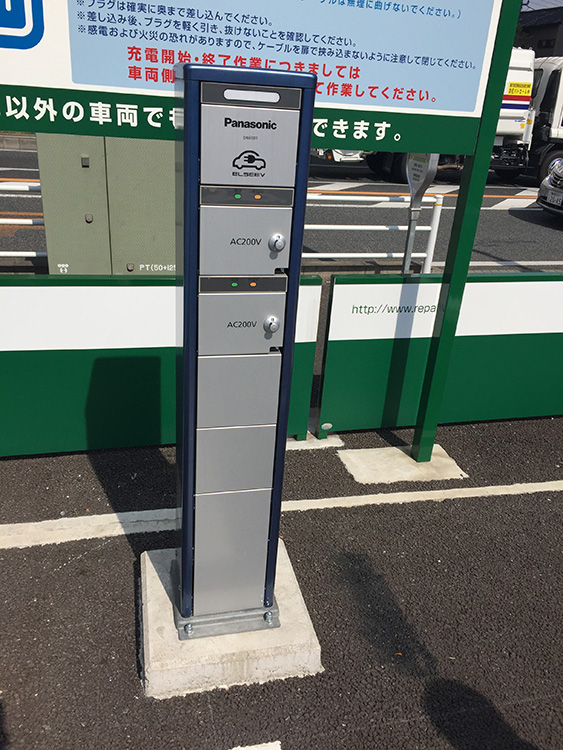
EV and PHV charging station at the Mitsui Repark Henn na Hotel Maihama Tokyo Bay Parking Lot (Urayasu City, Chiba)
Green Lease System
In order to promote operations of more environmentally friendly facilities, Mitsui Fudosan and Mitsui Fudosan Logistics Park Inc. will gradually introduce green lease clauses into tenants' leasing contracts.
This introduction of the system is one of our efforts to unite with tenants and implement environmentally friendly repairs and building operations. Our aim is to bring in tenants of our property portfolio on our efforts to promote ESG issues.
Climate-related Financial Disclosure in Accordance with TCFD
TCFD and Mitsui Fudosan's Position
The Mitsui Fudosan Group has announced its endorsement of the agenda of the Task Force on Climate-related Financial Disclosures (TCFD), which promotes corporations and others to disclose information relating to climate-related risks and opportunities. To mitigate risk through our business activities, including risk of damage from abnormal weather patterns linked to climate change; preserve environments where people and other living creatures can flourish; and establish a sustainable decarbonized society, we are taking the TCFD recommendations as a point of departure to disclose our analysis and response to climate change-related business risks and opportunities, and other related information.
Scenario Analysis
Assumptions and Object of Analysis
Our analysis is based on the 1.5˚C and 4˚C Scenarios outlined in the Sixth Assessment Report issued by the United Nations Intergovernmental Panel on Climate Change. As the time axis for analysis, we considered the typical life cycle of real estate assets, and calculated the impact of climate change by approximately the year 2050. In this, the first year of our scenario analysis, we used our Housing, Office Buildings, and Retail Properties businesses as the object of analysis, since these three categories represent the principal focus of the commercial activities of the Mitsui Fudosan Group, and are also likely to be major recipients of climate change impact.
Analysis Process
In accordance with the TCFD final report issued in June 2017, we carried out our analysis in four steps.
(1) Assessment of significant risks and opportunities
Using a variety of relevant sources, we identified climate change-related risks and opportunities having a potentially significant impact on the business of the Mitsui Fudosan Group.
(2) Future world definition
For significant risks and opportunities defined in (1), we used projections from external entities such as scenarios from the Intergovernmental Panel on Climate Change (IPCC), SDS, NPS, and NZE2050 scenarios from the International Energy Agency (IEA), and a number of others to project changes in society, government, customers, and suppliers in 2050 for the 1.5˚C Scenario and the 4˚C Scenario.
(3) Estimate of business impact
Based on external information gathered in (2), we estimated the financial impact on the Mitsui Fudosan Group's businesses. For risks and opportunities where quantitative data was difficult to obtain, we performed a qualitative analysis.
(4) Review of response measures (planned)
We reviewed response measures to climate change-related risks and opportunities with specially significant potential impact. Further review is planned to identify specific measures for adoption.
Analysis Result 1. Principal Risks and Opportunities
Based on external information, we identified climate change-related risks and opportunities, and gathered future projections for each risk and opportunity. With reference to the TCFD final report as well as other reports and sources relating to climate change, we considered risks and opportunities accompanying the transition to a decarbonized society (measures/regulations, industries/markets, technology) as well as physical risks and opportunities caused by climate change (chronic, acute). The significant risks and opportunities we identified that may have an impact the Mitsui Fudosan Group's three core businesses between now and 2050 are shown in the table below.
Under the 1.5˚C Scenario, our Housing Business could be affected by an increase in carbon taxes, which would push the price of raw materials prices and transport costs higher. While ZEH and energy conservation renovations would become more widespread, under the 4˚C Scenario, an increase in the number of extremely hot days would have a variety of impacts, including reduced labor productivity, and the result could be higher new construction costs. Under the 1.5˚C Scenario, our Office Buildings Business is also projected to see an increase in procurement costs. Costs may also rise due to higher GHG emissions taxes and expanded ZEB construction. At the same time, in terms of business opportunities, we would expect increased lease income from properties with superior environmental performance. Under the 4˚C Scenario, office air conditioning costs and damage from high tides and flooding are a potential concern. Finally, in our Retail Properties Business, the 1.5˚C Scenario indicates higher costs of the same type as in the other business areas. Lower lighting and heating costs can be expected, thanks to more efficient and renewable energy use by AI-equipped air conditioning and other systems, but under the 4˚C Scenario, retail properties situated near the ocean may experience increased risk of damage from high tides and flooding.
Analysis Result 2. Estimate of Business Impact
We reviewed available quantitative data and the significance of risks and opportunities. For selected principal risks and opportunities, we estimated the financial impact on the Mitsui Fudosan Group's business in the year 2050. Under the 1.5˚C Scenario, we projected a comparatively large negative impact on costs associated with higher carbon taxes, and the cost of meeting tightened energy conservation standards. At the same time, we estimated that these impacts would be fully offset by opportunities to construct more buildings with superior environmental performance, an area where the Mitsui Fudosan Group maintains a competitive advantage, and by reductions in heating and lighting costs made possible by advanced energy conservation technology. Under the 4˚C Scenario, we projected only limited actual losses from high tides and flooding, and overall, relative to the 1.5˚C Scenario we estimated there would be fewer factors with a major financial impact.
Results Derived from Analysis
We conclude from the results of our scenario analysis that regardless of whether actual global climate change reflects the 1.5˚C Scenario or the 4˚C Scenario, the businesses of the Mitsui Fudosan Group are sustainable and display a consistent resilience during the period through to 2050. Through reduction of GHG base units, promotion of energy conservation, and other efforts, the Mitsui Fudosan Group is promoting mitigation of the risk of higher carbon taxes, tightened regulations, and other climate-related risk. In addition, by reinforcing our superior market position, for example by deploying environment-conscious urban development in and outside Japan, such as smart cities in collaboration with everyone in our supply chain, including general contractors with construction technology for superior environmental performance, we will expand the business opportunities resulting from transition to the decarbonized society. Our scenario analysis enabled us to once again confirm the direction of our environmental efforts to date. Going forward, Mitsui Fudosan Group will work to enhance its resilience and maximize its opportunities through even more detailed and extensive scenario analysis and promotion of a wide range of response efforts.
Other Environmental data
Environmental Data by Prefectural/Municipal Ordinance
The Group wholeheartedly endorses all local government policies relating to climate change, including those of the Tokyo Metropolitan Government, and actively provides environmental data in accordance with prefectural/municipal ordinance.
Environmental Data Based on Ordinances of the Tokyo Metropolitan Government
(Bureau of Environment, Tokyo Metropolitan Government Report on Measures against Global Warming)
Environmental Data Based on Ordinances of the Yokohama Municipal Government
Environmental Data Based on Ordinances of the Saitama Prefectural Government
Environmental Data Based on Ordinances of the Hiroshima Municipal Government
Environmental Data Based on Ordinances of Tokyo Metropolitan Area Minato City Municipal Government
(Relevant Mitsui Fudosan Places of Business No. 412~415, 932〜933)




























